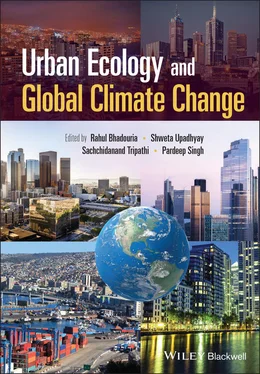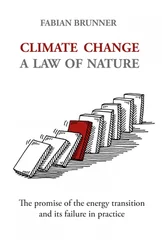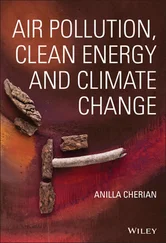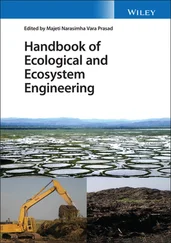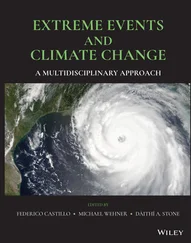Urban Ecology and Global Climate Change
Здесь есть возможность читать онлайн «Urban Ecology and Global Climate Change» — ознакомительный отрывок электронной книги совершенно бесплатно, а после прочтения отрывка купить полную версию. В некоторых случаях можно слушать аудио, скачать через торрент в формате fb2 и присутствует краткое содержание. Жанр: unrecognised, на английском языке. Описание произведения, (предисловие) а так же отзывы посетителей доступны на портале библиотеки ЛибКат.
- Название:Urban Ecology and Global Climate Change
- Автор:
- Жанр:
- Год:неизвестен
- ISBN:нет данных
- Рейтинг книги:4 / 5. Голосов: 1
-
Избранное:Добавить в избранное
- Отзывы:
-
Ваша оценка:
- 80
- 1
- 2
- 3
- 4
- 5
Urban Ecology and Global Climate Change: краткое содержание, описание и аннотация
Предлагаем к чтению аннотацию, описание, краткое содержание или предисловие (зависит от того, что написал сам автор книги «Urban Ecology and Global Climate Change»). Если вы не нашли необходимую информацию о книге — напишите в комментариях, мы постараемся отыскать её.
Urban Ecology and Global Climate Change
Urban Ecology and Global Climate Change — читать онлайн ознакомительный отрывок
Ниже представлен текст книги, разбитый по страницам. Система сохранения места последней прочитанной страницы, позволяет с удобством читать онлайн бесплатно книгу «Urban Ecology and Global Climate Change», без необходимости каждый раз заново искать на чём Вы остановились. Поставьте закладку, и сможете в любой момент перейти на страницу, на которой закончили чтение.
Интервал:
Закладка:
1.1.1 Urban Ecology
Nowadays most of the people live in the urban areas; however, they have limited understanding of the benefits derived from the interaction with the natural systems within the cities. Urban ecology is a scientific discipline which integrates a number of concepts from the natural and social sciences along with the landscape approach and ecosystems services at its core (Alberti 2008; Niemelä et al. 2011; Niemelä 2014) and represents the ‘ holistic ecology of urban areas ’ (McDonnell et al. 2009; Jim 2011). Since this field is still emerging, its hypotheses, models, and theories are still in the process of testing and validation (Niemelä 2014). Since human activities are the dominant factors in shaping the urban ecosystems, the urban ecology unintentionally revolves around the processes and interactions attributed by the human actions (Verma et al. 2020a). For example, urban ecology helps in recognising the restorative behaviour of humans for the natural ecosystems and elucidating the mechanisms responsible for the structuring of urban communities during the process of urbanisation (Steiner 2014; Duffy and Chown 2016). However, poor understanding of the complex interactions between the socio‐ecological and infrastructural developments in the urban ecosystems resulted in the social disharmony in the long term (Kattel et al. 2013). Therefore, Kattel et al. (2013) suggested a concept of complementary framework for urban ecology which represents the development of infrastructure and green spaces in an integrated manner to derive utmost ecosystem services. For instance, integrated development of flora and fauna along with the urban buildings, roads, and railway tracks for providing the utmost scope for the interactions between human inhabitants and wider communities through inter‐habitat‐community systems (Halpern et al. 2008).
Recent studies on urban ecology revealed that the field is now viewed as the ‘ecology of the city’ in addition to the ‘ecology in the city’ (Grimm et al. 2000; Pickett et al. 2001; Kattel et al. 2013; Childers et al. 2014). The ‘ecology in the city’ refers to the study of the natural ecological systems (fragments) within an urban ecosystem, i.e. different urban fragments as the analogues of their non‐urban counterparts, whereas ‘ecology of the city’ represents a much wider context where urban ecosystem itself is studied as an ecological system, i.e. the study of the interactions of various biological, built, and social components of the ecosystems within a city (Vasishth 2015; Pickett et al. 2016; Verma et al. 2020b). Based on these diverse concepts of the urban ecology, following sections shall provide a brief understanding of the urban ecosystems. In the next sections, climate change as an emerging challenge to the urban ecosystems has been discussed, followed by the possible urban ecological approaches for mitigating the ill effects of climate change in these highly heterogeneous and fragile ecosystems.
1.2 Components of Urban Ecology
An urban ecosystem is composed of several tangible and intangible components. Tangible components include the physical structures which can be natural (such as flora and fauna, water bodies, mountains, urban agriculture, etc.) or human‐made (such as built structures like buildings and building materials, roads, railways, health, and related infrastructural developments; energy sources like coal, liquified petroleum gas (LPG), wood; food supplies and waste generation, etc.). In addition, the intangible components include the ecosystems services derived from various natural systems, biogeochemical cycling, solar energy, and material flow in the urban areas (Verma et al. 2020a). These major components can be mainly divided into three sectors: (i) urban infrastructures associated with the urban heat island (UHI) effect; (ii) urban vegetation representing the green spaces and related ecosystem services; and (iii) urban metabolism which represents the flow of energy and materials within the urban ecosystems.
1.2.1 Urban (Built) Infrastructures
Urban infrastructures are built to provide the services and benefits to the urban inhabitants (Ma et al. 2020). Urban habitats are almost similar over large areas or human‐managed cities and microclimatic regions (Savard et al. 2000) having a central square with paved areas, residential areas, urban parks, urban agriculture, and some disturbed/unmanaged plots (Lososová et al. 2018). Considerable impervious surfaces such as roofs, roads, and paving are the most common features of urban infrastructure which sets cities apart from adjacent rural areas (Vasishth 2015). Both the components (viz. natural and artificial) of urban infrastructure help in the maintenance of the ecosystem functioning and health (Kattel et al. 2013). For example, vegetation cover and water bodies in the urban and peri‐urban areas provide habitats for biological diversity and help in maintaining the integrity of the natural/ecological and physical environments (Hofmann et al. 2012). In addition to the natural and artificial classification, urban infrastructures can also be classified into two major components viz. aboveground and belowground (Ma et al. 2020). Aboveground component comprises of the infrastructures at/on which citizens live in, walk on and ride on, such as buildings, parking lots, roads, sidewalks, green spaces, and public transportation (Andersson et al. 2014). Belowground component encompasses massive foundations of the buildings, subway lines, tunnels, gas lines, water and sewage pipes, stormwater management, electricity, and optical cables for providing various services to the citizens and ease in their livelihood (Sun and Cui 2018; Ma et al. 2020). Both the components of the urban infrastructures hold crucial significance and interact with each other in complex ways (Pandit et al. 2015). Aboveground infrastructures provide living spaces and comforts to the citizens, whereas belowground components play equally important services in the form of utilities, transportation, biomass, and structures which enable the urban areas for smooth functioning of the aboveground components (Ferrer et al. 2018; Ma et al. 2020). Moreover, natural components of the urban infrastructures such as plant roots and microbial communities also show strong competition for the space in the belowground components (Mullaney et al. 2015).
Land‐use and land‐cover changes are one of the major drivers of global change processes which should be taken into account considerably from ecological point of view (Vitousek 1994). Urban land cover has been projected to increase by 200% within the first three decades (2000–2030) of the twenty‐first century (Elmqvist et al. 2013). These projections revealed that there has been and would be a massive investment in the development of the urban infrastructures at the cost of consumption of natural ecosystems/landscapes (Green et al. 2016). Increase in impervious surfaces and the materials used for their formation (dark asphalt and roofing materials) due to massive urbanisation have the ability to absorb the solar irradiance and influence the local climate and hydrological conditions (Vasishth 2015). UHI effect (described later) is one of the major outcomes of the increase in such urban built infrastructures (Jaganmohan et al. 2016). For managing the urban ecological components (e.g. biodiversity, nutrient cycling, etc.) influenced by the land‐use change patterns, several conceptual frameworks, and models have been developed (Pickett et al. 2011). However, their proper implementation is lacking due to poor representation of the social components in these frameworks (Zipperer et al. 2011). Nowadays landscape urbanism is the emerging concept with non‐hierarchical, flexible and strategic planning where landscapes in the urban areas are designed and managed as per the demand of the society (Kattel et al. 2013). Detailed elaboration of such strategies and frameworks has been given in the later sections of the chapter.
Читать дальшеИнтервал:
Закладка:
Похожие книги на «Urban Ecology and Global Climate Change»
Представляем Вашему вниманию похожие книги на «Urban Ecology and Global Climate Change» списком для выбора. Мы отобрали схожую по названию и смыслу литературу в надежде предоставить читателям больше вариантов отыскать новые, интересные, ещё непрочитанные произведения.
Обсуждение, отзывы о книге «Urban Ecology and Global Climate Change» и просто собственные мнения читателей. Оставьте ваши комментарии, напишите, что Вы думаете о произведении, его смысле или главных героях. Укажите что конкретно понравилось, а что нет, и почему Вы так считаете.
